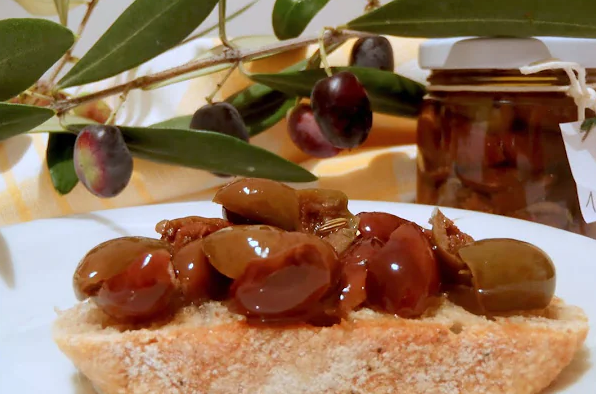A real treasure for gourmets, “Taggiasche” olives make each dish unique and tasty
Characterized by a particular taste, olive taggiasche owe their name to Taggia, a village situated in the province of Imperia. Even if nowadays they are considered Italian, it seems that they were originally from France: they were imported by the monks of the order of San Colombano in Lerino (Provence) in 1600, who were linked to the monks in San Dalmazzo of Pedona, nearby Taggia. In 1997, the olives were given the mark of DOP (Denominazione di Origine Protetta, Denomination of Protected Origin), meaning that EU recognized their peculiar characteristics, which are indissolubly connected with their region of origin. The processes of production, transformation and elaboration happens in a limited geographic area characterized by unique factors such as natural elements: climate and human factors like agricultural techniques. Producers of DOP products must observe strict rules that are supervised by an independent control office, which guarantees for their quality.
Visualizza questo post su Instagram
Olive tree, its leaves, flowers and fruits
The olive tree can exceed 10 meters and it can reach even 15 meters of height. It can live even more than 600 years and it starts producing olives after 3 years. Leaves are of medium length, rigid, wider and of a brighter green at the top, whereas its flowers are of a white-yellow colour. This variety is particularly delicate as it suffers rigid climates and parasites, this being the reason why they need sunny exposure and to be protected from the wind. Its fruit, which matures in January, is of a green, brown and black colour, and can reach 2-4 grams of weight. What differentiate this specie of olives is its gustative refinement: the taste and the smell are unique. The harvest happens both by shaking the tree and by picking the olives once they have already fallen on the ground, but nowadays the most common practice is the first one. In the past days, shaking was a work reserved to men and picking to women.
Visualizza questo post su Instagram
How to enjoy “olive Taggiasche”
This kind of olives are perfect and delicious both alone and as side dish. It is usually tasted with many Ligurian courses, both of meat and fish. Some examples are stewed rabbit alla ligure or alla sanremese, lamb with olives, roast beef with olive sauce, salt cod alla levantina, cappunadda and pickled olives. They can be eaten as appetizer or together with salami and cheese, tuna and other kinds of fish; they can be served on bruschette or crostini after being minced, or added to tomato sauce; they are also perfect in a summer salads.
From the nutritional point of view, 100 gr of Taggiasche olives contain:
37 gr of fat
1,9 gr of carbs
1,5 gr of protein
353 Kcal
Visualizza questo post su Instagram

